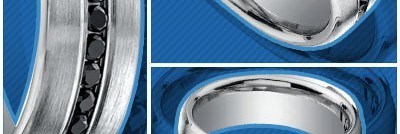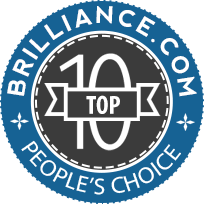Many people approach buying loose diamonds by just walking into their local jewelry store, but there’s actually lot to think about in order to make an informed decision. The people behind Brilliance.com make it their goal to educate customers all about certified loose diamonds and diamond jewelry. Doing this ensures customers are getting the very best certified diamonds available on the market and the highest quality customer service. Because of Brilliance.com’s dedication to quality and customer service, the diamonds they offer are certified by some of the most qualified and well-respected laboratories in the world.
Laboratory Certified Diamonds
What’s the difference between laboratory certified diamonds and uncertified loose diamonds? It’s easy – laboratory certified diamonds have been graded by a trained gemologist. The gemologist will note all the important details about the diamond, including the cut, carat weight, clarity and color. The professional gemologists will be able to discover any flaws, determine the color, weigh the diamond and evaluate how well the cut maximizes the diamond’s brilliance and fire.
Each stone is graded objectively, regardless of who is grading the diamond. Sometimes more than one gemologist grades each stone to ensure accuracy. Since the world of certified diamonds is a small one, some laboratories even hide the name of the diamond’s owner, allowing the gemologist to grade the stone without bias.
What Can You Expect From Brilliance.com’s Certified Diamonds?
You’ll be sure to find quality diamonds if you’re shopping at Brilliance.com. If you’re shopping for certified diamonds, you can easily compare diamonds of similar sizes, cuts and price ranges. This means you can purchase the best quality diamond regardless of how small or large a budget you have available.
Certified diamonds from Brilliance.com are sold with a detailed grading report. If you’re looking for diamonds from other sources, make sure you’ll receive the grading report along with the diamond. A reputable store selling certified loose diamonds should expect to include this information with your purchase. If they can’t provide it, take your diamond shopping elsewhere.
Trust Only The Best Diamond Laboratories
There are many laboratories that grade certified loose diamonds, but Brilliance.com only chooses to use the very best. These laboratories are the International Gemological Institute (IGI), the European Gemological Laboratory (EGL), the Hoge Raad voor Diamant (HRD), the American Gem Society and the Gemological Institute of America (GIA). Each laboratory uses different methods, but all are considered top sources of certified loose diamonds.
The AGS grades diamonds on a 0-10 scale, with 10 being the worst and 0 being the best. Two different gemologists grade each stone, and the laboratory is known for having some of the industry’s highest ethical standards.
The HRD, located in Belgium, is well respected in the world of certified loose diamonds. The HRD requires that several gemologists grade each stone and the results must be identical before the stones can be considered certified diamonds. Additionally, the HRD has two more steps to ensure graders are completely unbiased. Firstly, gemologists never know the identity of the diamond’s owner. Also, senior gemologists randomly check the certification paperwork against the stone to make sure the diamonds are being accurately graded.
The EGL is also based in Belgium and is known industry-wide for setting new standards in certified loose diamonds. At one time, loose stones under one carat weight weren’t even considered for grading. Now, many of Brilliance.com’s certified loose diamonds are less than one carat, which shows the influence the EGL has in the diamond world. Recently, the EGL created the SI3 grade, which means a stone has visible inclusions under a 10x magnification.
The IGI ensures accurate grading of loose diamonds by using a team of gemologists to grade each stone and some of the most advanced equipment available. The equipment used by the IGI includes an electronic balance that can accurately measure the diamond’s weight to a ten-thousandth of a carat, 10x magnification loupes and high-powered microscopes. The entire team must agree before a stone can be graded.
The Best Of The Best – GIA Loose Diamonds
The GIA is considered the best of the best in the world of certified loose diamonds. The GIA was founded in 1931 and created the International Diamond Grading System in 1953. The International Diamond Grading System sets uniform criteria that graders use when certifying a diamond. Additionally, each GIA certified diamond is graded by two to five different gemologists to ensure accuracy.
Many different gemologists must agree on a diamond’s certification before it can be given a GIA grading report. The report will give the culet and girdle thickness, the weight, color, clarity, measure, polish, symmetry and even a diagram that tells the buyer exactly where any inclusions are located. The written report should be included when you buy certified diamonds.
Buying certified diamonds, whether loose or pre-set into a piece of jewelry, means you’ll be purchasing a beautiful, quality product that’s sure to provide years of enjoyment for the wearer. After reading up on the different laboratories that offer certified diamonds, you can rest assured that you’re buying diamonds from a reputable source when you shop at Brilliance.com.


